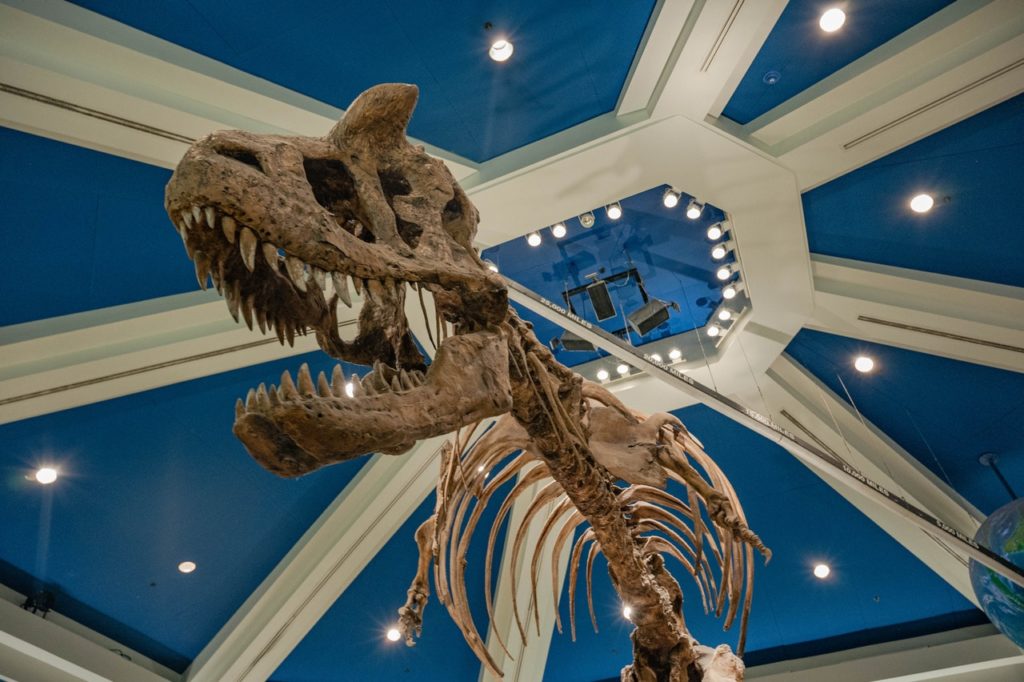
I learned this today. The first dinosaur was named 20 years before the word “dinosaur” was invented.
Dinosaur fossils have probably been dug out of the ground ever since people have been able to dig, but no one would have known what they were. Chinese writings from about 2000 years ago reference dragon bones, which may very well have been dinosaur bones. Chinese people used dragon bones in medicine for hundreds of years.
Robert Plot was the first person to draw a dinosaur bone. He was the first curator of the Ashmolean Museum, Britain’s first public museum, and the first professor of Chemistry at Oxford University. He was an English naturalist. He drew rocks, minerals, and fossils. In 1676, he described and drew a large thigh bone. He thought it was the bone of a Roman war elephant, but later changed his mind and said that it was the bone of a giant human. The fossil disappeared, but the drawing appears to be the thigh bone of a Megalosaurus.
Other people found bits and pieces of dinosaur fossil, but nobody knew what they were. William Buckland was the president of the Geological Society of London and the first reader of Geology at the University of Oxford. He traveled all over the world collecting and buying fossils. He managed to accumulate quite a collection, but he still didn’t really know what they were. After the end of the Napoleonic Wars, the French comparative anatomist, Georges Cuvier, came to look at Buckland’s collection. He suggested that the bones he had found were those of a giant lizard. Buckland continued studying the bones with his friend William Conybeare and they kept working on the assumption that they had found a huge lizard. In 1822, they announced the name Megalosaurus for the creature. “Megas” means large in Greek and “sauros” means lizard or reptile.
So, in 1822, the first dinosaur was named Megalosaurus. However, the people that named it didn’t really know what it was, and the word for what it was wouldn’t be coined for another 20 years.
Also in 1822, Gideon Mantell found a tooth in a quarry that was different to any species yet found. After a lot of back and forth with the scientific community, it was recognized as a new species. He thought the bones resembled those of a large iguana, so he called the animal iguana-saurus. William Conybeare, the co-namer of the Megalosaurus, thought that iguanodon would be better. “Don” comes from the Greek word “odon”, which means tooth.
So, the second dinosaur had been named, but people still didn’t know what they were naming.
Once people heard that new species were being found, the number of people searching rose and the number of new discoveries rose as well. In 1842, Sir Richard Owen wrote a History of British Fossil Reptiles. This book cataloged and described all of the fossils that had been found but, more than that, he used the word “dinosauria” for the first time. He looked closely at the Megalosaurus, the iguanodon, and the Hylaeosaurus, the third dinosaur named, and he realized that they shared a lot of characteristics. He saw that the spine at the base of each animal’s spine had fused together. Because of this, he grouped them together. He decided to call this group of new creatures dinosaurs. “Dino” from the Greek “deinos” meaning terrible, and saur from “sauros” meaning lizard. He meant terrible in size and not ferocious. People were still convinced dinosaurs were a type of lizard and they scaled them up in the same way. They decided that if an iguana had a tooth the same size as an iguanodon, it would be about 60m long. And that would be pretty terrible. And so, the name terrible lizard, dinosaur, was born. 20 years after the first dinosaur was named.
So, the first dinosaur was named in 1822 by William Buckland and William Conybeare. They called it Megalosaurus because they thought it was a giant lizard. The second dinosaur was named in 1824 and it was called iguanodon because it looked like it had the teeth of an iguana. It wasn’t until 1842 when Sir Richard Owen worked out that the three species of dinosaurs found so far were connected and grouped them together in his book, that the name dinosaur was invented. It means terrible lizard, but Sir Richard Owen meant terrible in size, not ferocious. And that is what I learned today.
Photo by David Guerrero from Pexels
Sources
https://www.nhm.ac.uk/discover/how-dinosaurs-got-their-name.html
https://en.wikipedia.org/wiki/Iguanodon
https://en.wikipedia.org/wiki/William_Buckland
https://en.wikipedia.org/wiki/Megalosaurus
https://en.wikipedia.org/wiki/Robert_Plot
https://wonderopolis.org/wonder/who-discovered-the-first-dinosaur-bone
https://www.bbc.com/news/uk-england-lancashire-31623397
https://en.wikipedia.org/wiki/Richard_Owen
https://www.discovery.com/science/First-Dinosaur-Fossil-Name
https://en.wikipedia.org/wiki/Dinosaur
https://www.scholastic.com/teachers/articles/teaching-content/when-was-first-dinosaur-discovered/
